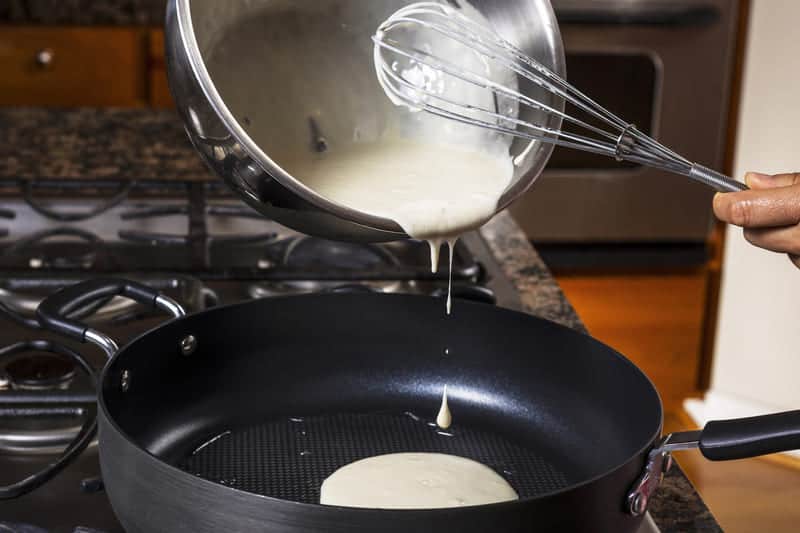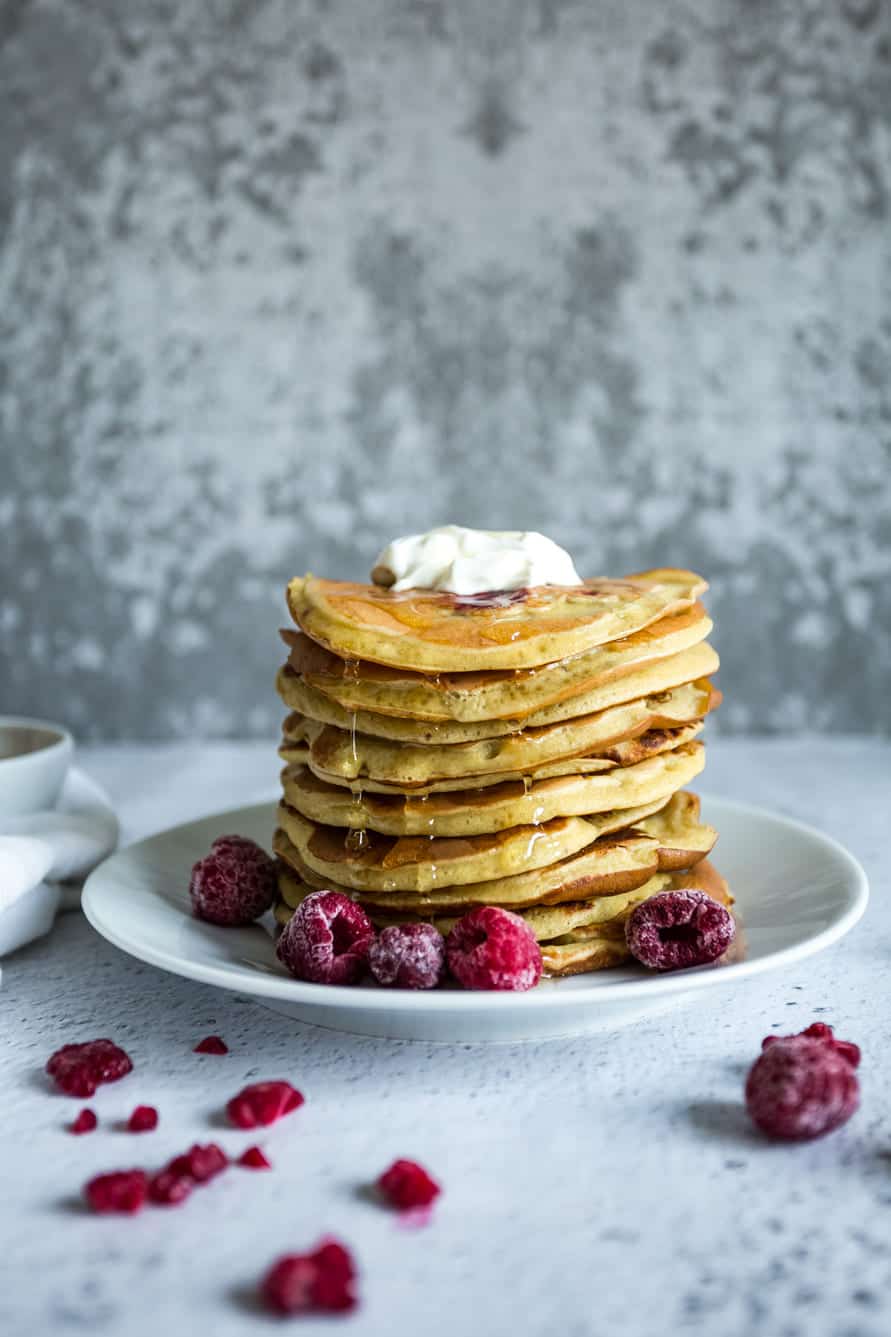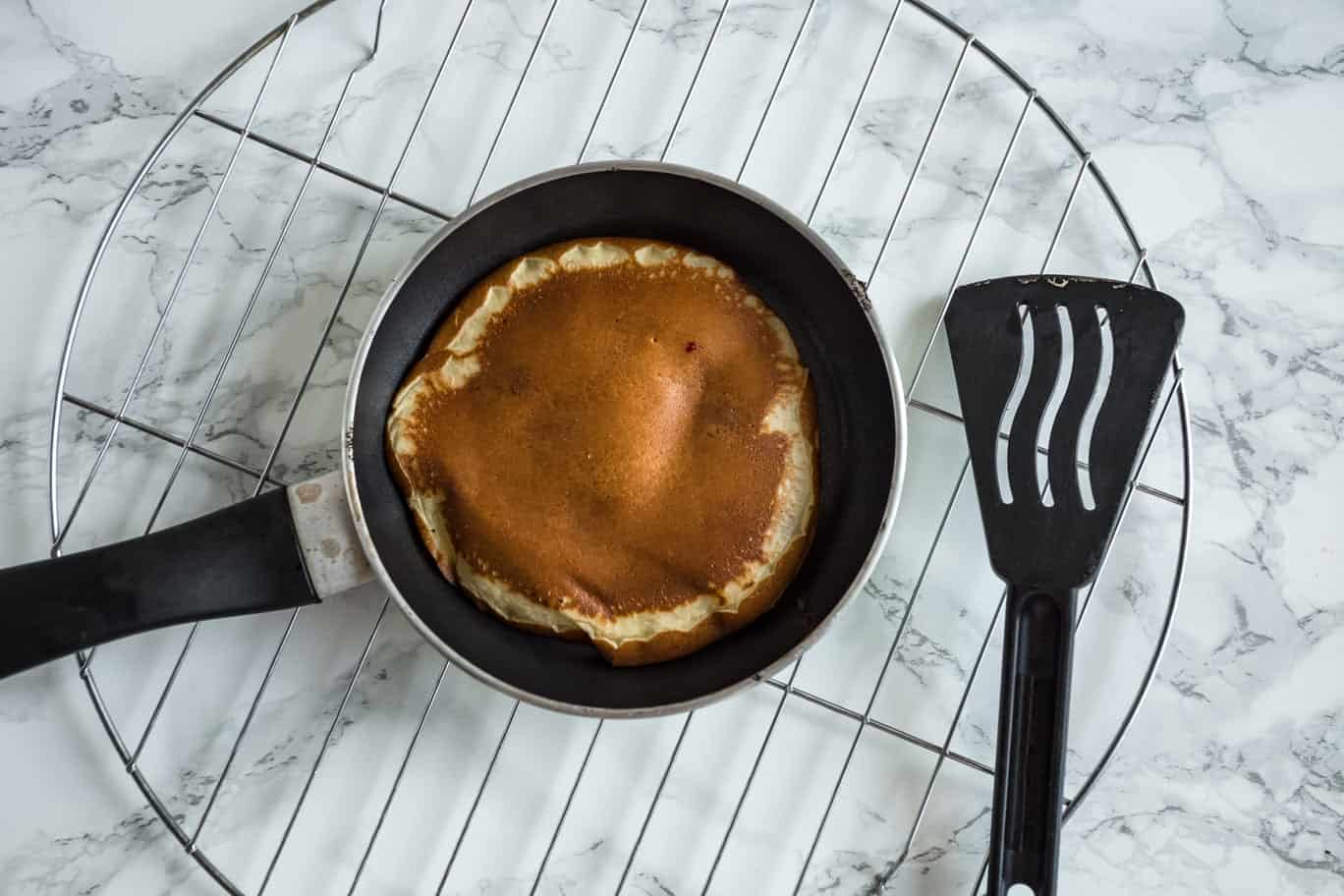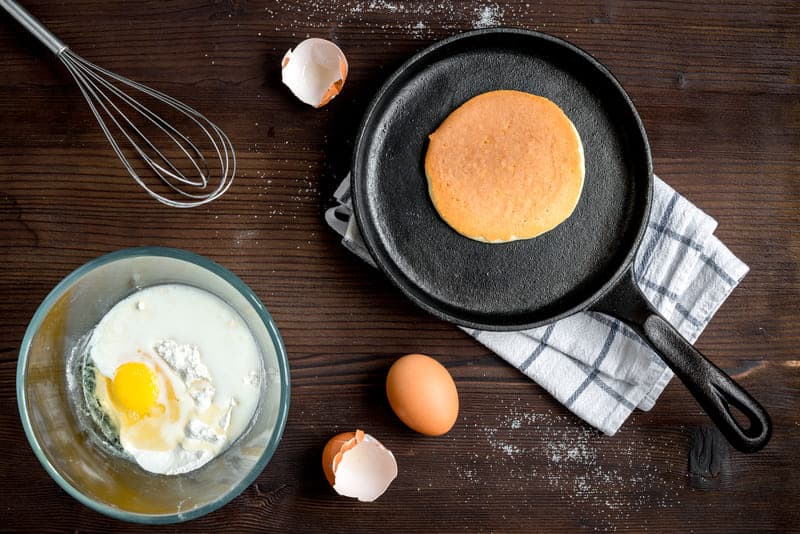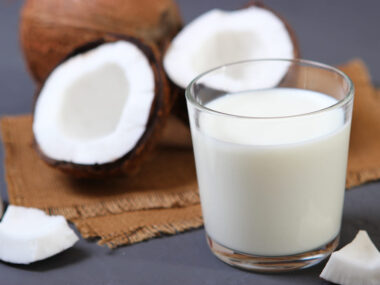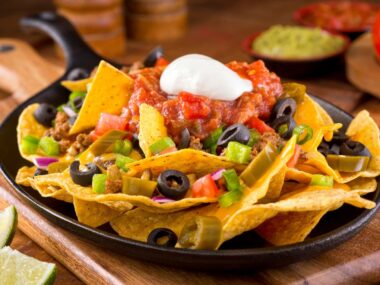Suppose you prefer to make pancakes but don’t have any milk available or prefer a dairy-free choice while still enjoying delicious, fluffy pancakes.
You might be curious how to cook them with only water. Pancakes have classically been achieved using different straightforward methods and, frequently, simply the materials readily available.
Yes! You can use water instead of milk to have fluffy, tasty pancakes. The same method works for making pancakes without milk. Just add water instead of milk.
In this article, we’ll look at how water can be used to make pancakes instead of milk.
Can I Substitute Water for Milk?
Water can be used as a substitute for milk in pancake recipes. That’s all, then! You are already aware that water may be substituted for milk while making pancakes. Don’t be hesitant to attempt it the next time.
However, since milk makes pancakes softer and fluffier, water is a preferred ingredient by many individuals.
Pancakes without milk may be made quite quickly. It’s just as easy to make pancakes with water as with ordinary batter.
The flavor of the prepared pancakes will be the primary distinction between a water-based pancake preparation and a dairy one.
Also check: Can You Make Pancakes With Waffle Mix
Adding milk in preparation, whether dairy or non-dairy, gives pancakes a luscious taste. Even though there won’t be much difference, many people will likely identify a few unique characteristics in milkless pancakes.
A pancake made without milk may be stiff since milk also contributes to the soft texture of the pancakes.
The most common way that people describe it is as being heavier. But when served with syrups or other moisturizing additives, the pancake can retain some of its softness.
Therefore, don’t compromise on the melted butter, vanilla, and small sweetener if you want delicious pancakes mixed with water.
The Texture of a Milkless Pancake
Due to the fact that milk also adds to the fluffy texture of the pancakes, a pancake prepared without it could be a touch stiff.
Frequently, it is said to be a little heavier. The pancake may regain its soft texture if added flavor enhancers or other hydrating ingredients are used.
In the refrigerator, evaporation makes milkless pancakes stiffen even more. This can have the same effect, especially if you reheat the pancakes on an open frying pan.
More: The Best Pancakes Without Eggs Recipe
When the same ingredients are used, milkless pancakes taste just like conventional ones. The pancakes’ flavors won’t differ greatly.
The batter can also be sweetened with maple syrup or vanilla extract to make up for the recipe’s lack of milk.
These seasoning additives will not only cover-up, but also improve the flavor notes of the pancakes cooked without milk.
Benefits and Drawbacks of Making Pancakes with Water Instead of Milk
Since water is significantly less expensive than milk, preparing pancakes with it will allow you to save a little expense.
Furthermore, you spare yourself from the unfavorable effects of drinking milk. Many individuals get stomach issues even after eating a few pancakes with very little milk.
Additionally, you may completely eliminate the milk from the recipe if you don’t prefer it.
Meanwhile, if you’re on a diet, removing the milk from the recipe will reduce calories, which will only help you.
A little change in flavor may be found among the drawbacks, yet even this small variation may appeal to some. A person can profit from this variation in taste as well.
To recreate the flavor and smoothness of the originally cooked pancakes, you’ll need to mix and experiment with various ingredients.
This is a benefit since there is a major part of the tasting experiment. Everything is up for addition.
Also check: 7 Best Substitutes For Milk In Pancakes
What Can I Use If I Don’t Have Milk?
Besides the water, several alternatives can be substituted for milk in most recipes to moisten the dry ingredients and add flavor without influencing the quality.
Check in the replacements as follows:
1. Heavy Cream
Heavy cream is a suitable alternative to milk, but you’ll need to liquefy this before due to its significantly greater fat content.
Use a mixture of half heavy cream and half water in replacement of the specified amount of milk in the recipe.
2. Sour Cream
Another excellent alternative to milk is sour cream. It will provide moisture and has an average taste.
3. Yogurt
In recipes, yogurt works exceptionally well in lieu of milk. Similar to sour cream, it will provide taste, richness, and a little tang.
4. Condensed Milk
Condensed milk sweetened with sugar can also be used in replacement of ordinary milk when cooking delicious delicacies.
Just note that you’ll usually have to reduce the amount of sweetener in your preparation as it’s already very intense.
5. Evaporated Milk
Milk that has had some of its water content evaporated is precisely it is called evaporated milk. It is, therefore, among the finest milk alternatives available.
Simply combine it with equal water, and then substitute the milk in your mixture exactly as you would ordinary milk.
More: How Long Does Pancake Batter Last?
Does Milk or Water Make Pancakes Fluffier?
The milk fat is essential for soft, moist pancakes in addition to flavoring them. The same outcomes simply cannot be achieved with plain water.
Pancakes get fluffier with milk. Since it is a heavier liquid, thick batter is preferred over thin batter.
The pancakes would not rise as they should if the batter were too thin. Dairy items such as milk, butter, yogurt, and buttermilk can be substituted for water in the wet components to make pancakes tastier.
A thick batter is preferred as a thin mixture will provide flat pancakes, which won’t get airy.
In a prepared pancake, the gluten network traps air bubbles brought on by chemical leaveners like baking powder, helping the pancake to expand and stay voluminous while retaining its shape. Rest the mixture for at least 15 minutes if you want softer, fluffier pancakes.
In conclusion, use yogurt or buttermilk rather than milk, split the eggs, and beat the whites until stiff. Additionally, use a frying pan warmed at the proper temperature.
Can I Use Water Instead of Milk for Bisquick Pancakes?
When making Bisquick, water works just as well as milk. While milk helps Bisquick retain moisture, has a soft texture, and can brown when baked or cooked, replacing water for milk won’t significantly alter the final result.
There are no eggs or dairy components in the Bisquick baking mix. Water can be used in place of milk to keep the dish dairy-free and vegan.
Milk prices might be high. You spend less money when you use water instead. Bisquick retains its consistency and flavor even when water is used in its place, with a little quality reduction.
Disadvantages of Using Water for Bisquick Pancakes
- Milk gives your sweet treats or pancakes richness that water is unable to.
- Dairy milk’s proteins provide foods like cakes and pancakes taste, mouthfeel, and a delicate, crumbly consistency. Your mix will not taste better with water.
- Color is influenced by milk. Using water in place of milk will result in less noticeable browning.
- Water can be used in place of dairy milk. However, water lacks the minerals, calcium, and vitamin D that dairy milk contains.
- Water will result in less delicate pancakes than milk.
What Happens If You Forget to Put Milk in a Cake?
Milk plays an important role in the cake. So if you forget to put milk in a cake, the outcome will not be good.
A cake’s texture will also be impacted by the milk. The texture of cakes often becomes stronger and lighter when milk is used in the recipe.
Although you would assume that milk’s primary function in a cake is to supply moisture, it serves many more purposes.
The most crucial function of milk in creating a great cake is its ability to moisten the batter for chemical processes.
The fact that milk dissolves sugar activates the gluten and moistens protein, starches, and leavening agents is one of milk’s intriguing properties. The chemical reaction required for baked foods occurs as a result.
You may also use milk in your dish to increase its sweetness a little bit. Adding milk to your batter will enhance its flavor as it is inherently sweet due to the presence of fat and sugar.
Milk may also aid your baked items to gently brown at the same time. The outside has a hint of browning and structure to preserve all the sweetness inside, even if the interior may be soft and fluffy. One significant factor in it is milk.
Conclusion
Water-based pancakes taste quite as good! In general, there isn’t much difference if you make pancakes using water instead of milk; the results will still be completely acceptable.
As a result of the reduced amount of fat, the pancake could appear chewier and less airy, and its flavor may also be diminished.
To fix these problems, you can add a little additional butter or more flavors. Water may perform all the functions that milk performs in a pancake recipe because all that is required to bake this delicacy is a liquid basis.
Don’t overlook other ingredients; they are crucial in cooking as well. Try experimenting with different components, then savor your supper!
